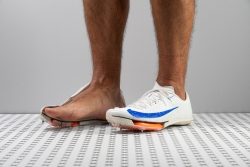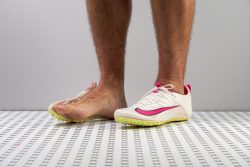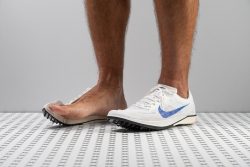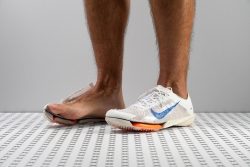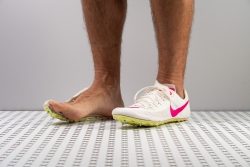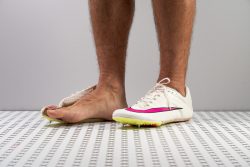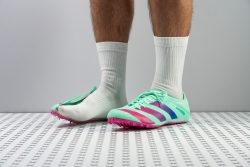7 Best Running Spikes in 2025
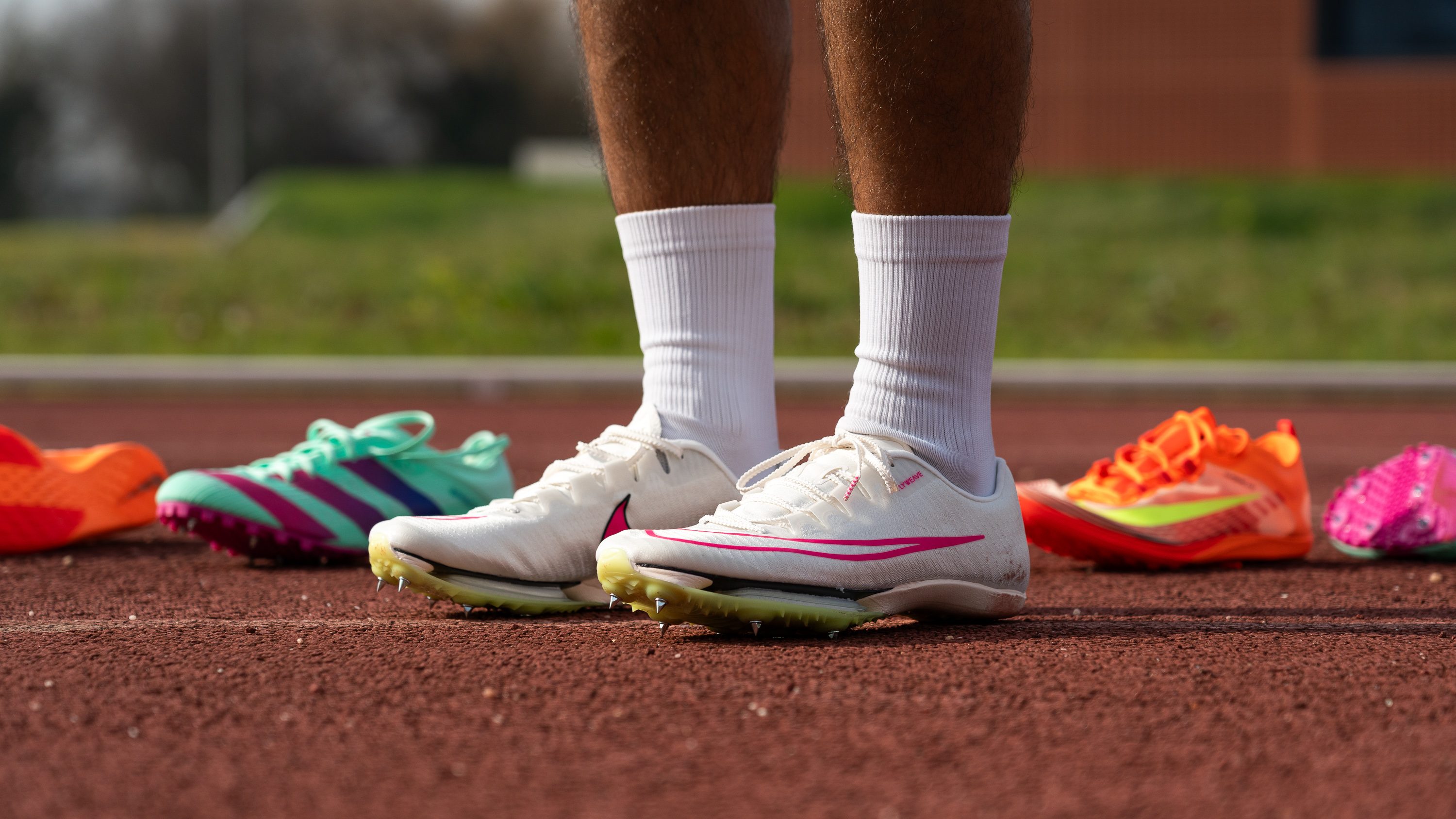
We buy shoes ourselves. We earn commissions when you buy through us, at no extra cost. Why trust us
A well-selected pair of running spikes can be a real performance booster or even help you set a new PB.
We have tested these running spikes to help you buy the best pair. We cited every little detail we discovered and assessed during our lab tests. Whether you are an advanced athlete looking for a premium shoe or a beginner on a tight budget, we’ve got the top picks for you.
How we test running spikes
Here at RunRepeat, we provide you with recommendations for the best track and field shoes based on our very own experiences and observations. We set the process in motion by getting hold of the shoes we wanted to test. We purchase the pairs with our own money so that we do not need to gratify anyone, especially brands, by providing a good review.
We then test the shoes on the track. We assess all the things we can notice about the shoes, but we make sure that we spend a substantial amount of time in each of them before we finalise our thoughts.
Next up, cut the shoes in half and measure every little detail. This allows us to present more than 30 parameters that describe the shoe.
Best running spikes overall
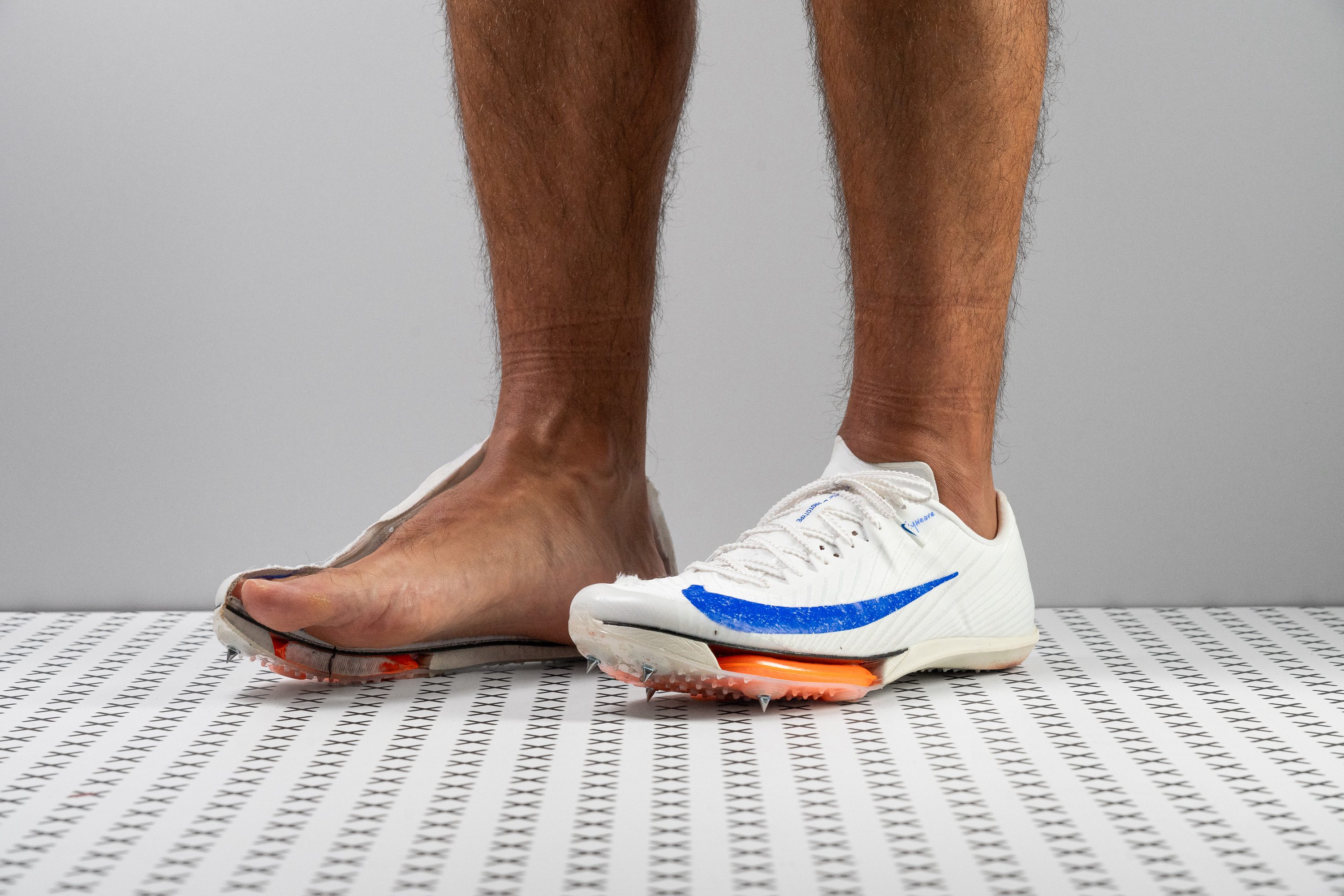









































What makes it the best?
We pushed our lab-tested running spikes to the limit and found Nike’s MaxFly 2 as the best overall. It screams maximum record-breaking speed with its powerful midsole, propulsive FlyPlate, and grippy outsole. We believe this premium spike is one of the most advanced of its kind, justifying its £190 price tag.
MaxFly 2 gives one of the most unique rides we’ve ever tried. It features the pleasant ZoomX foam in the heel and dual Air Zoom units in the forefoot that launch us forward. Our calliper reveals a 15.7/17.7 mm stack, leading to an aggressive -2.0 mm drop that promotes forefoot striking.
Complementing the Air Zoom’s magic is the stiff FlyPlate. Altogether, the ride feels incredibly energetic. Our bend test confirms it’s tough to bend by being 80.2% more rigid than average, translating to insane responsiveness with every stride.
Underfoot, transitions feel smooth and the traction works well thanks to the highly engineered spike plate with many tiny lugs. The forefoot has 6 spike pins for added traction on the track.
Other than its steep price, we can’t recommend this to beginners as it demands flawless form and technique for it to fully come alive. It would be best to dip their toes in a more affordable spike.
Pros
- Explosive ride
- Improved heel stability
- Enhanced midfoot design
- Dual Air Zoom units
- Premium materials
- Excels at anything below 800m
- Ready for hurdles too
- Stiff carbon plate
Cons
- Still not durable
- Heavier than previous version
- Steep price tag
Best running spikes for 100-400 metre sprints
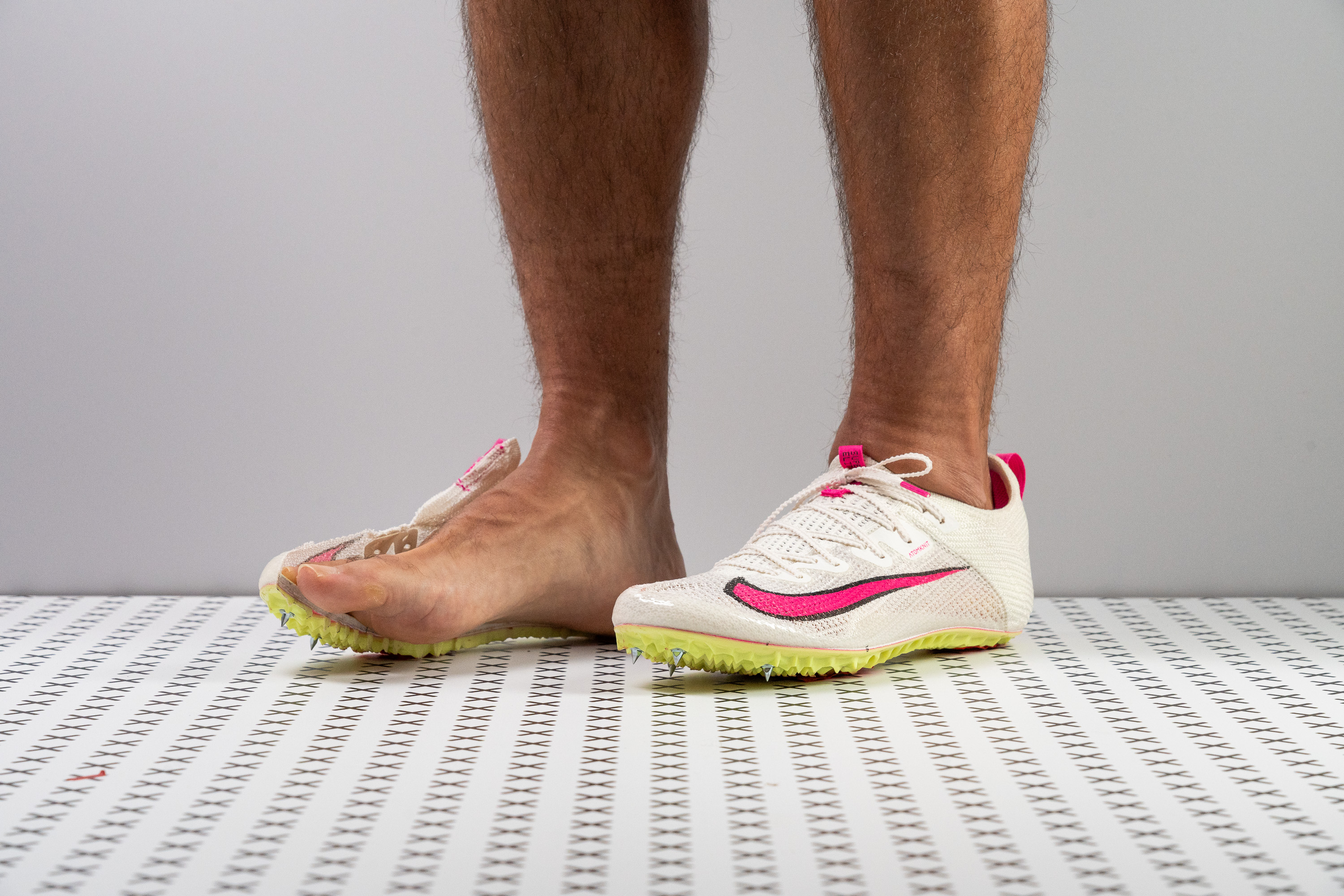





































What makes it the best?
We bolted through 100m-400m distances in search of the spike with the best track feel—Nike’s Zoom Superfly Elite 2 undeniably dominated this category. Its lack of a midsole gives direct ground connection and its aggressive design feels insanely propulsive, grippy, and race-ready with its fit. This lightweight elite spike unleashed our speed and power beyond our imagination.
It's hard to ignore how close we felt to the track, with only 12.3 mm combined insole and outsole separating us from the ground. Our calliper measured a non-existent drop, further enhancing the barefoot experience, and is perfect for building muscle strength.
The spike feels airy on foot with its 5.5 oz (156g) build, but its energy return makes its presence undeniable. Underfoot, the honeycomb-patterned outsole doubles as a propulsion plate, offering both energy return and traction. We felt steady sprinting through curves as the 8-pin configuration bit the track well.
The Atomknit upper feels light and breathable as it hugs our feet snugly. Our smoke test confirms this with a high 4/5 score for ventilation. Thankfully, the shoe didn’t taper too much and had 75-mm wiggle room for our big toe.
Because of its aggressive nature, we don’t recommend this shoe to amateurs. More advanced and skilled runners will enjoy the full benefits this Nike can offer.
Pros
- Snug, performance-oriented fit
- Premium design and materials
- Ideal for 60-400m sprints
- Suitable for hurdles
- Designed for raw speed
- Notched, Alphafly-like laces
- Lightweight build
- Enhances foot strength
Cons
- Demands superior technique
- Not cushioned
- Narrow platform
Best track shoes for long distance
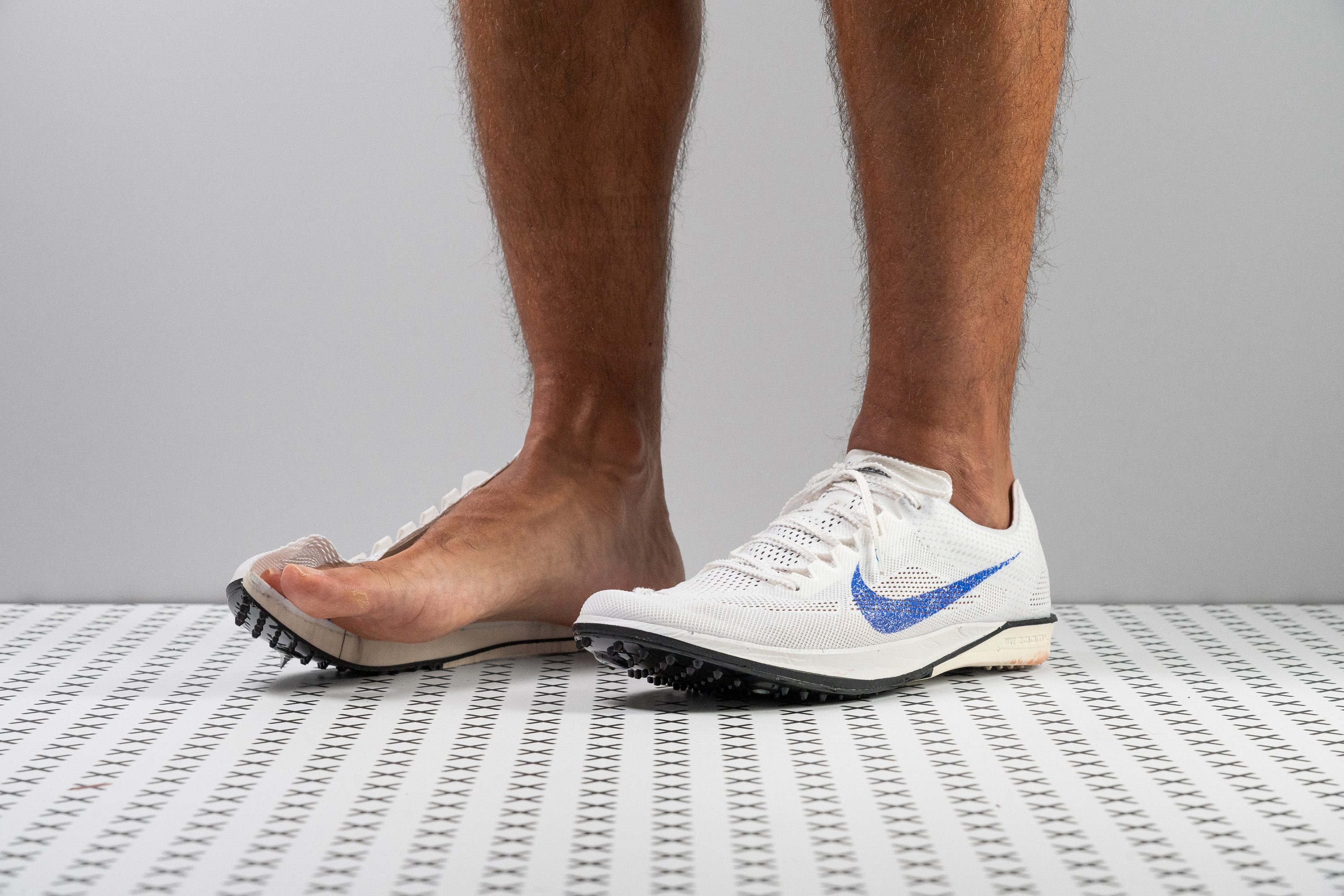










































What makes it the best?
The Nike Dragonfly 2 feels like a dream with its airiness, speed, and comfort on track. We felt like flying in our high-mileage efforts as this elite racer shines best in 1500m distances and beyond. It’s extremely supportive and powerful, making it our top long-distance spike.
Dragonfly 2 feels pleasantly bouncy and fast throughout our track workouts mainly through its ZoomX cushioning. This premium foam is Nike’s lightest and most responsive, and we’re blessed to have a generous 19.9/19.7 mm stack in this shoe. It’s very supportive for long distances and delivers massive energy return. We noticed its capability to sustain our power for long efforts, thanks to the stiff Pebax plate that ensures a smooth and efficient ride.
Dragonfly 2 is a real pleasure to be in since the light build and airy upper create a weightless and effortless sensation. It has many perforations for breathability and feels comfortable to be in, validated by its 5/5 breathability score in our lab. Meanwhile, our scales reveal it’s a feathery 5.1 oz (145g), 7.6% below average.
Underfoot, the outsole features a streamlined 4-pin removable setup for enhanced agility. Its traction is unquestionable as we had no slips even as we encountered high-speed curves.
To experience its elite performance means paying a higher price tag of £160. We recommend those on a budget to explore other options.
Pros
- Ideal for long-distance track events
- Breathable upper
- Full-length Pebax plate
- Enhanced stability
- New 4-pin outsole design
- Superb fit with notched laces
- Highly responsive midsole
- Can handle 800m races too
Cons
- Upper lacks durability
- Small weight gain
- Price increase
Best track superspike for long distance
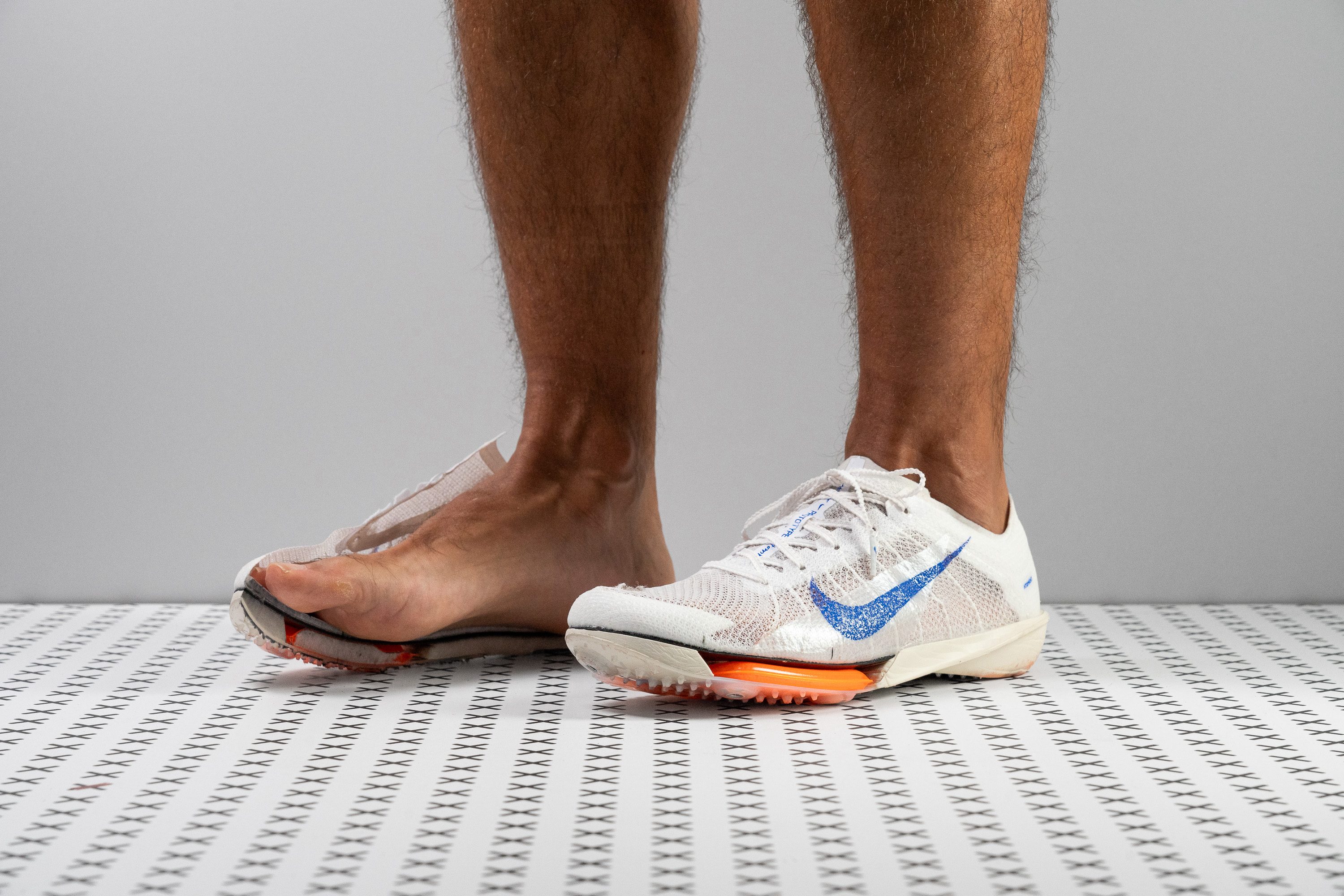












































What makes it the best?
Extremely light and fast feel like understatements when describing our runs in the Nike Victory 2. We discovered in the lab that it combines all the best speed-oriented features into one: feather-weight build, dual Air Zoom units, top-tier cushioning, and the Flyplate. This powerhouse is undeniably our top superspike on track.
Victory 2 feels incredibly bouncy underfoot thanks to the glorious ZoomX foam which got a plush 12.5 HA durometer reading. It features a maximum cushioning of 19.9/19.3 mm to keep our legs fresh for distances of 800m and beyond. The forefoot includes dual Air Pods which spring us back powerfully with every stride.
We also found a full-length spoon-shaped Flyplate in the midsole, which adds stiffness to the shoe to enhance propulsion. Our bend test confirms this by being 43.5% more resistant to bending than the average spike.
What also allowed us to pick up our speed is the spike’s weightlessness. At a mere 4.9 oz (135g), it’s 13.5% lighter than average and melts away on foot. The Atomknit upper’s light and airy feel also enhances its effortless feel. It smashed our breathability test with a perfect rating. However, it wreaked havoc under our Dremel so we can’t recommend this spike to those who want durable uppers.
Pros
- Exhilarating ride
- Breathable, snug-fitting upper
- Propulsive Air Zoom units
- Versatile for mid-to-long distances
- Lightweight
- Improved 4-pin outsole
- Built for smashing PBs
Cons
- Price
- Not the best for beginners
- Upper needs more durability
Best lightweight running spikes
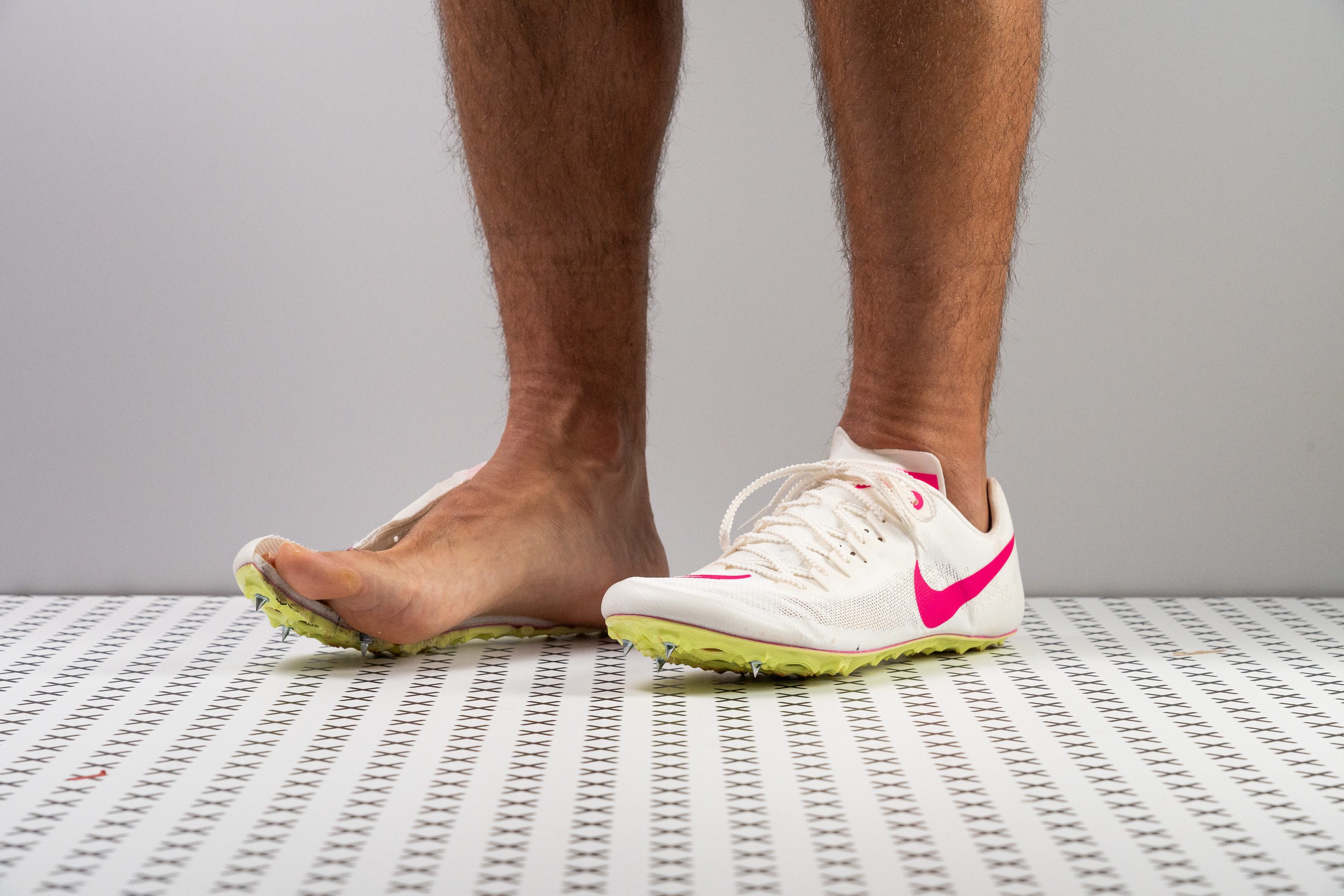




































What makes it the best?
After countless tests on track and in the lab, the Nike Ja Fly 4 is our best lightweight track spike. Its grounded and minimalist nature makes it ideal for 60-200m sprints, delivering speed without the harsh stiffness of carbon plates. This spike is highly flexible and lightweight and ensures top speed without being too aggressive.
Underfoot, we discovered an outsole made of 4.5 mm of plastic. Essentially, the absence of the rubber outsole and minimal midsole contributes to its light 5.1 oz (145g) weight and flexibility. No matter how much we twisted the shoe on our manual assessment, it surrendered freely, earning the lowest 1/5 torsional rigidity rating.
Another standout feature is the spike's remarkable connection to the track, which we attribute to the low 11.2 mm heel and forefoot we measured with our calliper. As a true zero-drop shoe, it gives a genuine barefoot experience that develops leg muscle strength.
Interestingly, our bend test tells a different story vs. our twist test. At 15.5N, this Nike resisted more than the average spike (13.0N), providing some propulsion without the harsh stiffness of carbon plates. The grip from the 7 removable pins underfoot also boosts our speed and confidence on the track.
However, the lack of foam means we cannot recommend Ja Fly 4 for distances beyond 400m because the landing impact will feel too harsh on foot.
Pros
- Lightweight design
- Removable pins
- Cost-effective choice
- Comfortable tongue
- Enhances foot strength
- Ideal for 60-200m sprints
- Notched laces
- Above-average durability
Cons
- Limited breathability
- No midsole
- Extremely narrow upper
Best track shoes for beginners
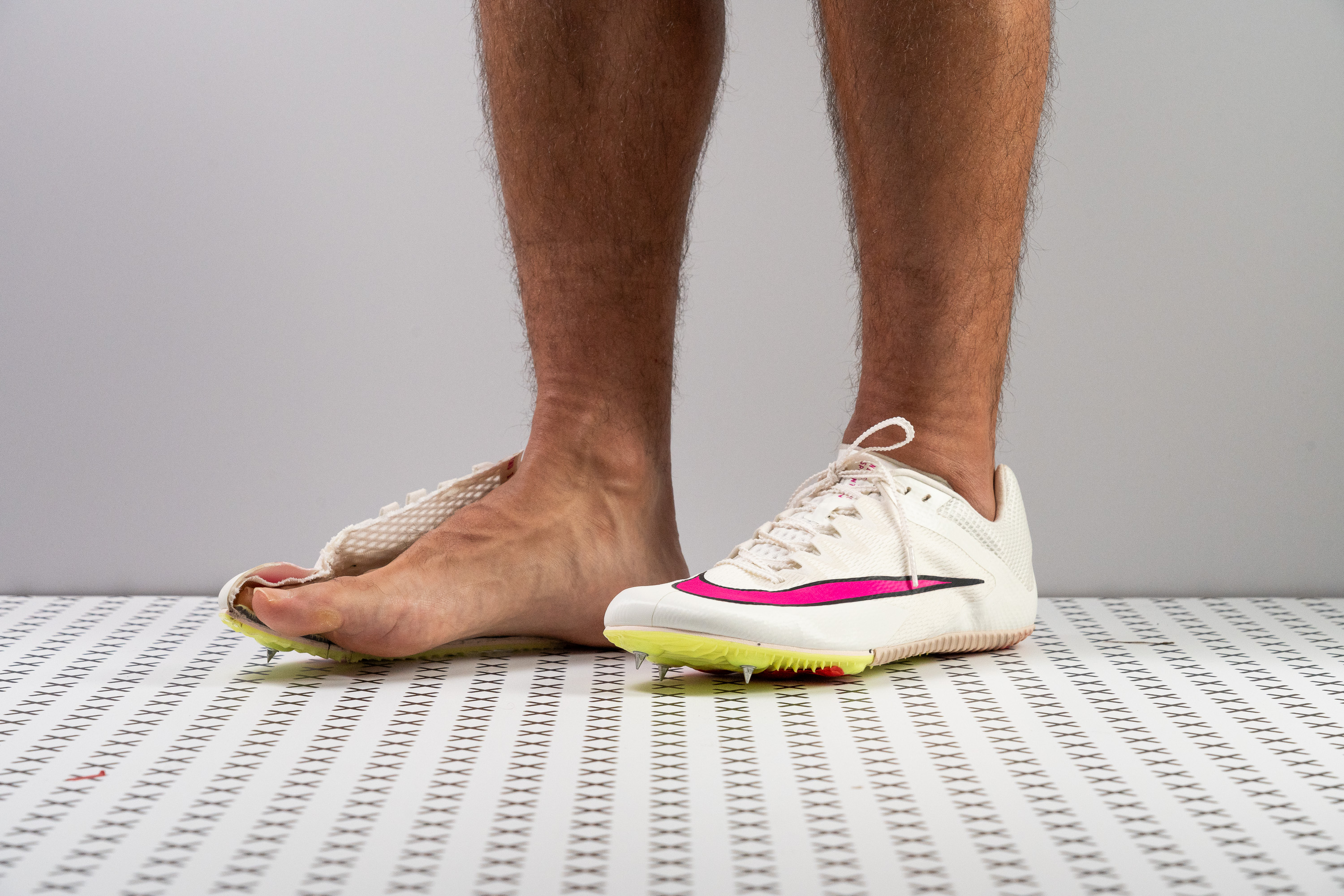







































What makes it the best?
Nike Rival Sprint is all about comfort, support, and durability at a very accessible £80 price point, making it our best entry-level track spike in the lab. It’s a non-intimidating spike with a less aggressive, breathable, and flexible build, perfect for newcomers who want to conquer the track.
Starting with the midsole, we measured a steep 3.3 mm drop vs. our almost flat 0.7 mm lab average. The incline gave extra support to our calves and tendons, which beginners still need.
Rival Sprint features a tough 2.8 mm rubber outsole around the rear area and a Pebax plate along the forefoot for snappier toe-offs. The spike includes 6 removable pins that gripped the track excellently during testing. Despite the presence of a plate, this spike is one of the most flexible we’ve ever tested, boosting its comfort. Our bend test reveals it’s 39.9% more flexible than average.
Upon testing the upper, we were pleased with its perfect blend of breathability, comfort, and durability. It scored 5/5 on our smoke test and felt so soft, it’s suitable for going sockless. Even against our Dremel, the toe cap put up a tough fight with an impressive 4/5 durability rating.
However, the shoe tips the scale to a heavy 6.1 oz (174g). If every millisecond counts, we suggest exploring lighter options.
Pros
- Pebax plate enhances toe-off
- Highly breathable
- Premium notched laces
- Affordable price point
- Roomy toecap area
- Suitable for hurdles
- Provides good stability
- Slightly cushioned
- Impressive durability
Cons
- Noticeable weight
- Possibly too flexible
Best budget running spikes
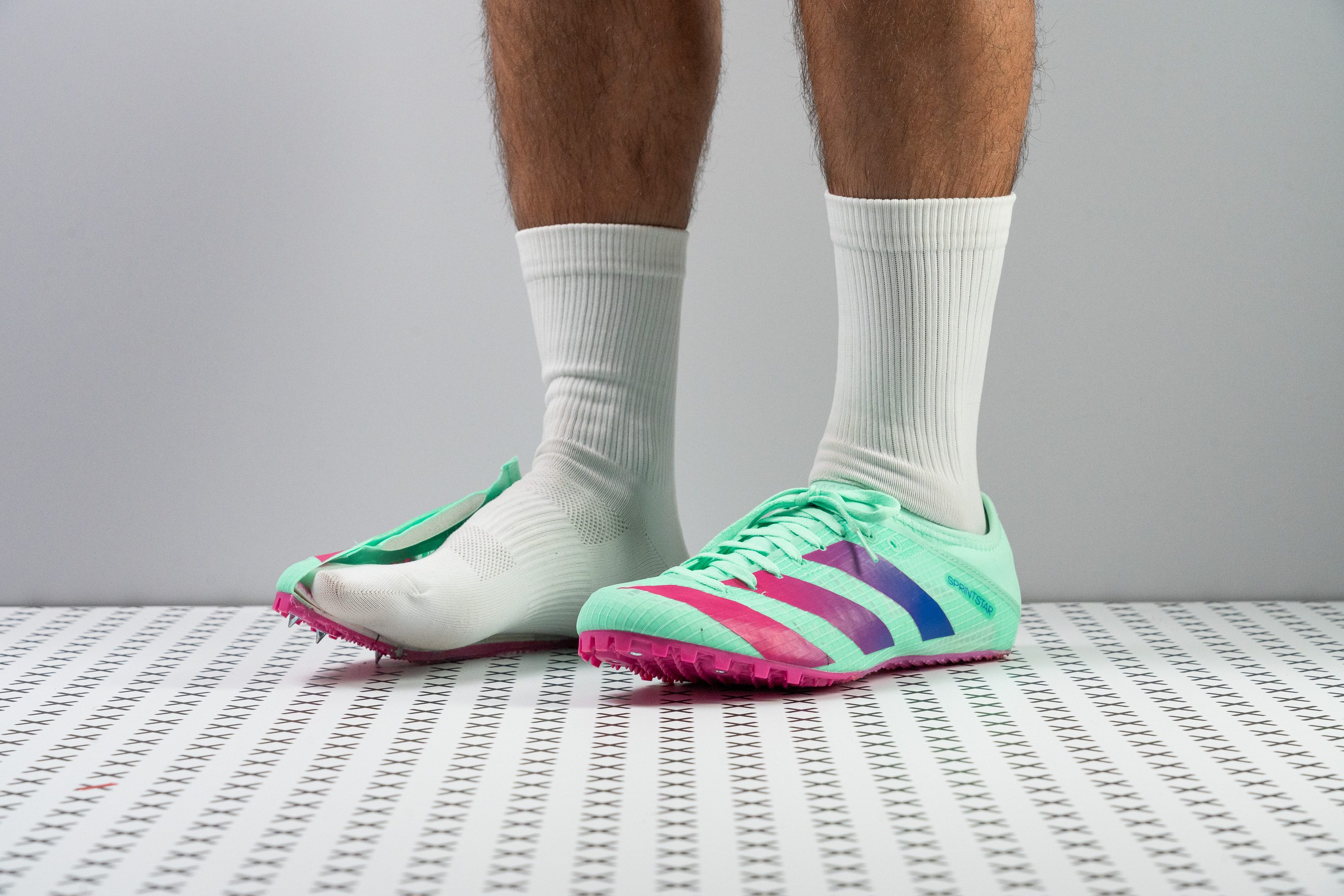




































What makes it the best?
At only £70, Adidas Sprintstar is the most affordable option among our lab-tested running spikes (£120 average). For almost half the price, it delivers impressive durability and a natural feel. Based on actual tests, this spike suits runners who want to test their leg power and raw speed for 60-400m sprints.
As soon as we stepped on the track, this spike emphasised ground feel, which is a great way to strengthen our legs for shorter sprints. It has a very thin 10.4/8.6 mm heel and forefoot stack highlighting the barefoot experience.
The flexible and plateless midsole moves easily with our feet and keeps it all natural. We noticed the shoe wasn’t too rigid and felt gentle on foot. Our flex test confirms it’s 48.6% more adaptive than average.
What truly blows our minds is how durable this spike is, even for its budget-friendly price! We barely saw signs of wear after extensive testing. Both the toebox and heel strongly resisted our rigorous Dremel, showing promising signs of longevity. Meanwhile, the outsole measures a tough 88.0 HC and is 1.1 mm thicker than average. These results also translate to a longer shoe lifespan.
Unfortunately, because of the absence of a propulsive midsole, we experienced leg fatigue faster. We found that this spike is not suitable for sprints beyond 400m.
Pros
- Excellent track grip
- Ultra-padded tongue
- Unbeatable value
- Removable pins
- Ideal for novices
- Exceptional ground sensation
- Solid durability
Cons
- Zero cushioning
- Poor ventilation
- Requires strong feet
To simplify things, running spikes are running shoes for the track that, unlike regular running shoes, use pins to bite into the ground. Track pins are stainless-steel or composite-material spikes that are screwed into the bottom of track shoes to (significantly) improve grip and traction on different track surfaces.
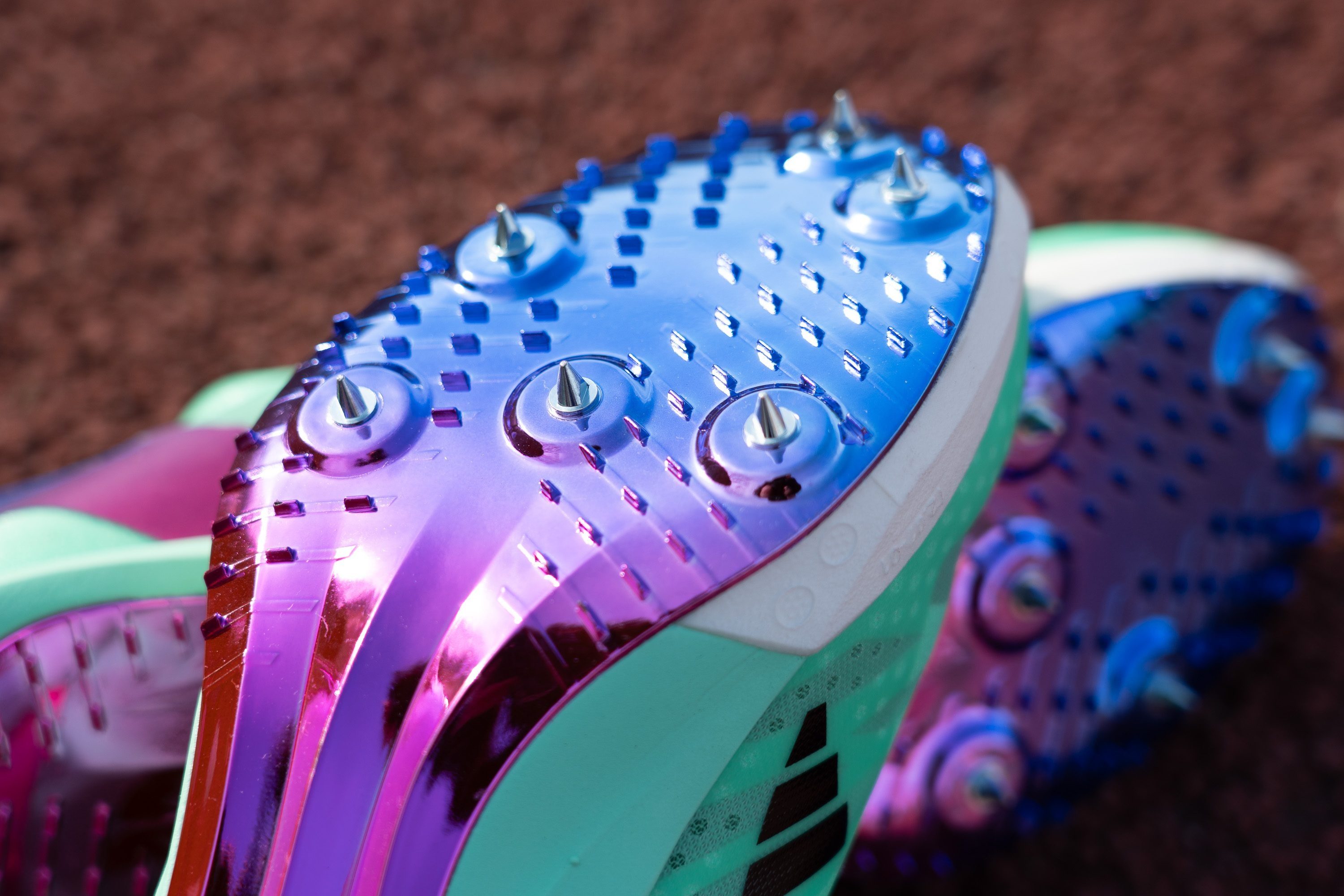
3 track and field shoe categories
In track and field, there are three shoe categories: running, jumping, and throwing. This guide focuses on track shoes for running. In running, there are track shoes for sprints, middle distances, and long distances. In jumping, we have long jump, triple jump, high jump, and pole vault. In throwing, there are shoes for javelin, shot put, discus throw, and hammer throw.
Running running spikes
The design and features of running spikes depend on their purpose or, in this case, the distance. We have 3 large groups here:
- Sprints: 100m, 200m, 400m. These spikes are the most aggressive!
- Middle distance: 800m and 1500m. A lot of overlap with the long-distance ones.
- Long distance: 3000, 5000, and 10000m. Many features overlap with the mid-distance spikes.
Other disciplines easily fall into one of the categories above because we have Steeplechase that’s 3000m long, Relay with 4x100m or 4x400m, and Hurdles that have distances of 100/110m or 400m.
Outdated overview: sprint, mid-distance and long-distance running spikes
Many athletes will use one pair of spikes to do as much as possible. This makes sense financially and when you don’t want to carry a backpack with more than 1 pair of shoes. Previously, spring spikes were the lightest, most explosive ones, and had barely any cushioning, while the distance spikes were the opposite.
|
Outdated overview of track running shoes’ features |
|||
|
Feature |
Sprint |
Middle distance |
Long distance |
|
Cushioning |
Minimal |
Some |
More cushioned |
|
Stiffness |
Very stiff |
Moderate |
More flexible |
|
Weight |
Feather-light |
Lightweight |
Lightweight |
|
Upper |
See-through, thin, minimal support |
Very thin, some structure |
More structured |
Today, things have changed!
Current state of track spike features
Today, price dictates the features. Removing the foam (cushioning) makes the shoes cheaper but not necessarily better, even when explosiveness is needed. Premium cushioning costs more.
|
Feature |
Current overview |
|
Stack height |
Official 20 mm limit for the stack height. Modern running spikes are cushioned, even the sprint ones! Budget running spikes can have minimal cushioning, while more expensive ones tend to have great cushioning. |
|
Stiffness |
Sprint running spikes are not (necessarily) stiffer than the mid- or long-distance spikes. |
|
Weight |
Varies and depends on the cushioning (and budget). Currently, per our database, sprint running spikes weigh more on average than distance spikes. |
|
Upper |
The durability of the toebox varies and mostly depends on the price. |
We will cover all of these features in great detail below in this guide. To make the point about the price, here are 2 tables with the cheapest and most expensive track shoes and their weights and amount of cushioning.
Spike pins: all you need to know
Pins are spikes that athletes screw into the outsole of track shoes when they want to level up their performance by experiencing a superb grip. These spikes bite into the surface, literally, and may help improve the running form by putting the focus on the ball of the foot.
|
Before deciding on the spike shape and length, be sure to check the current legal limit for your discipline and surface. |
Number of pins per shoe varies. Usually, the longer the distance, the fewer the pins:
- Sprint spikes usually have 6-10 pins,
- Mid-distance and long-distance track shoes usually have 4-6 pins.
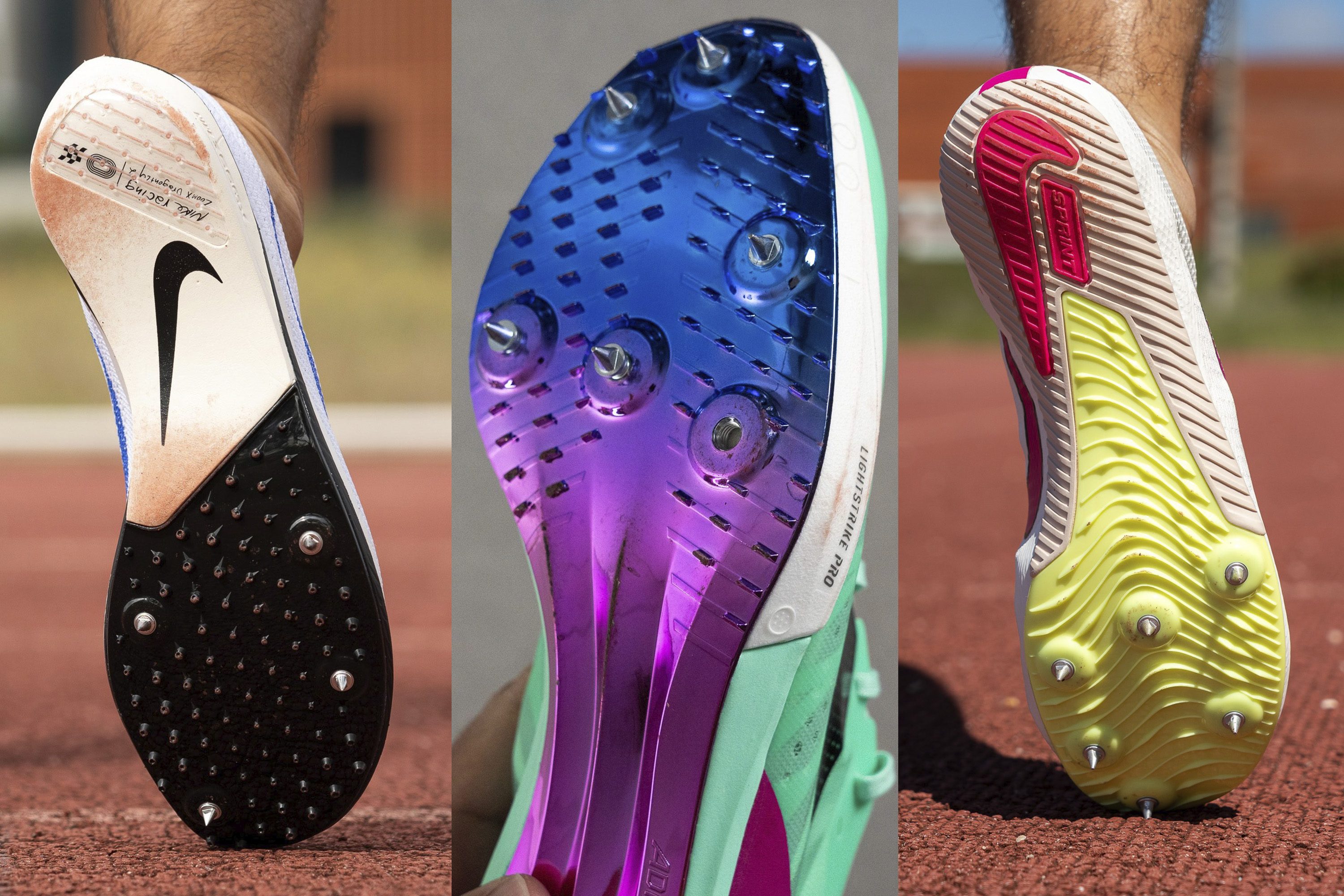
|
Longer pins are used on outdoor tracks because outdoor tracks are softer and can take such beating, while indoor tracks don’t have that much give, so shorter pins are needed. |
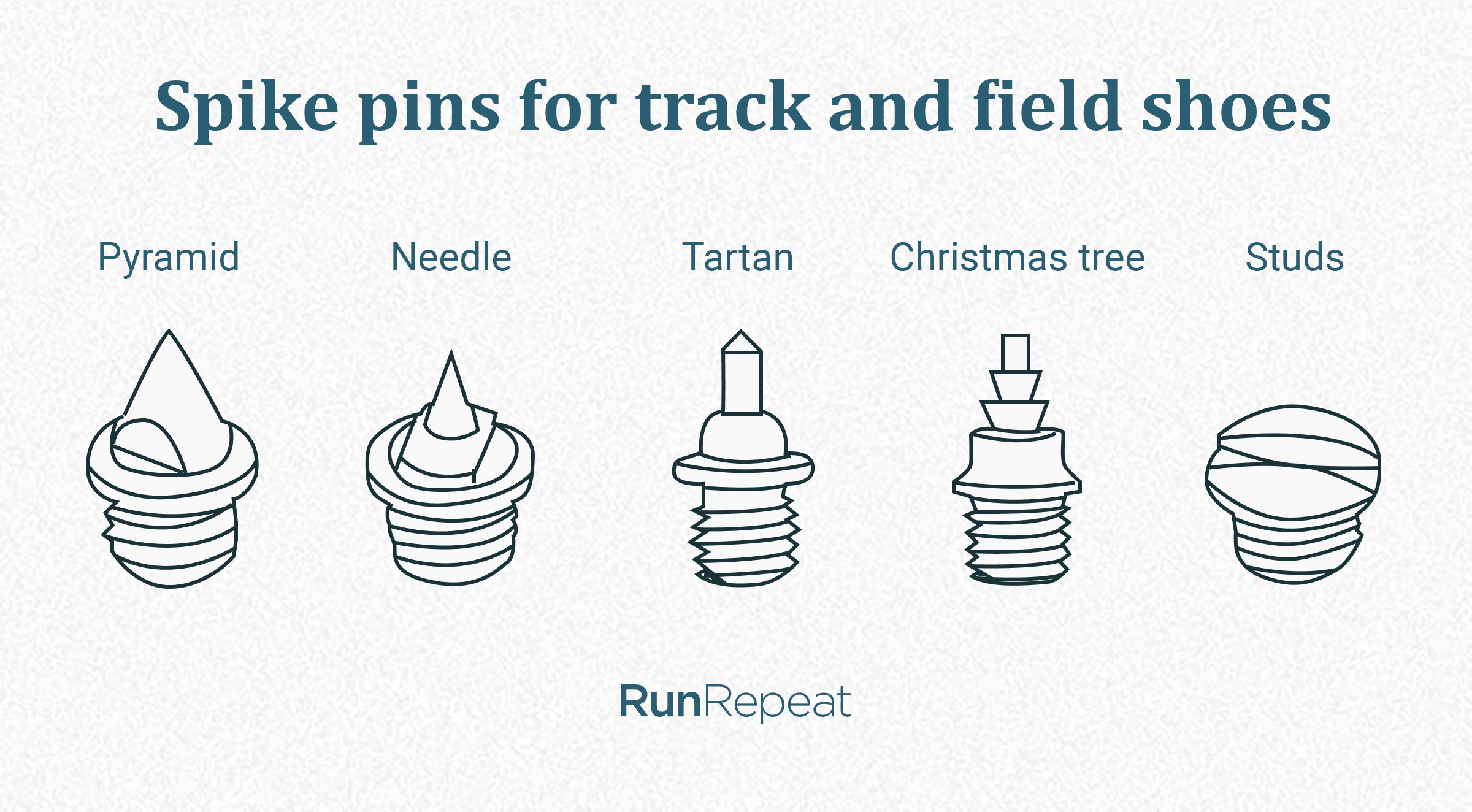
The shape and length (depth) of the pins you need depend on the surface and overall use. Here’s an overview of pin types and their features:
|
Spike pins: feature overview |
|||
|
Pin type |
Grip |
Surface |
Track damage |
|
Needle |
Very high |
Hard track |
Worst, often forbidden |
|
Pyramid |
High |
Track |
OK, usually allowed |
|
Xmas tree |
Moderate/high |
Synthetic track |
OK, usually allowed |
|
Tartan |
Moderate |
Rubberized track |
Heavy, often forbidden |
|
Blank/flat/studs |
Low |
Any track |
Least to no damage |
Pyramid, needle, and Christmas tree pin shapes are the most common today. Depending on the pin shape and length, athletes are expected to use areas that are clearly marked as OK for such use. The good thing is, the pins are removable so you can try different shapes when needed.
Stiffness of track shoes
Stiffness varies and sprint running spikes are said to be the stiffest. Let’s check that! We measure the stiffness with a specialised machine by bending the shoes to 30 degrees after fixing the toebox in place and adjusting for the toe rocker. The more force is needed for this, the stiffer the shoe.
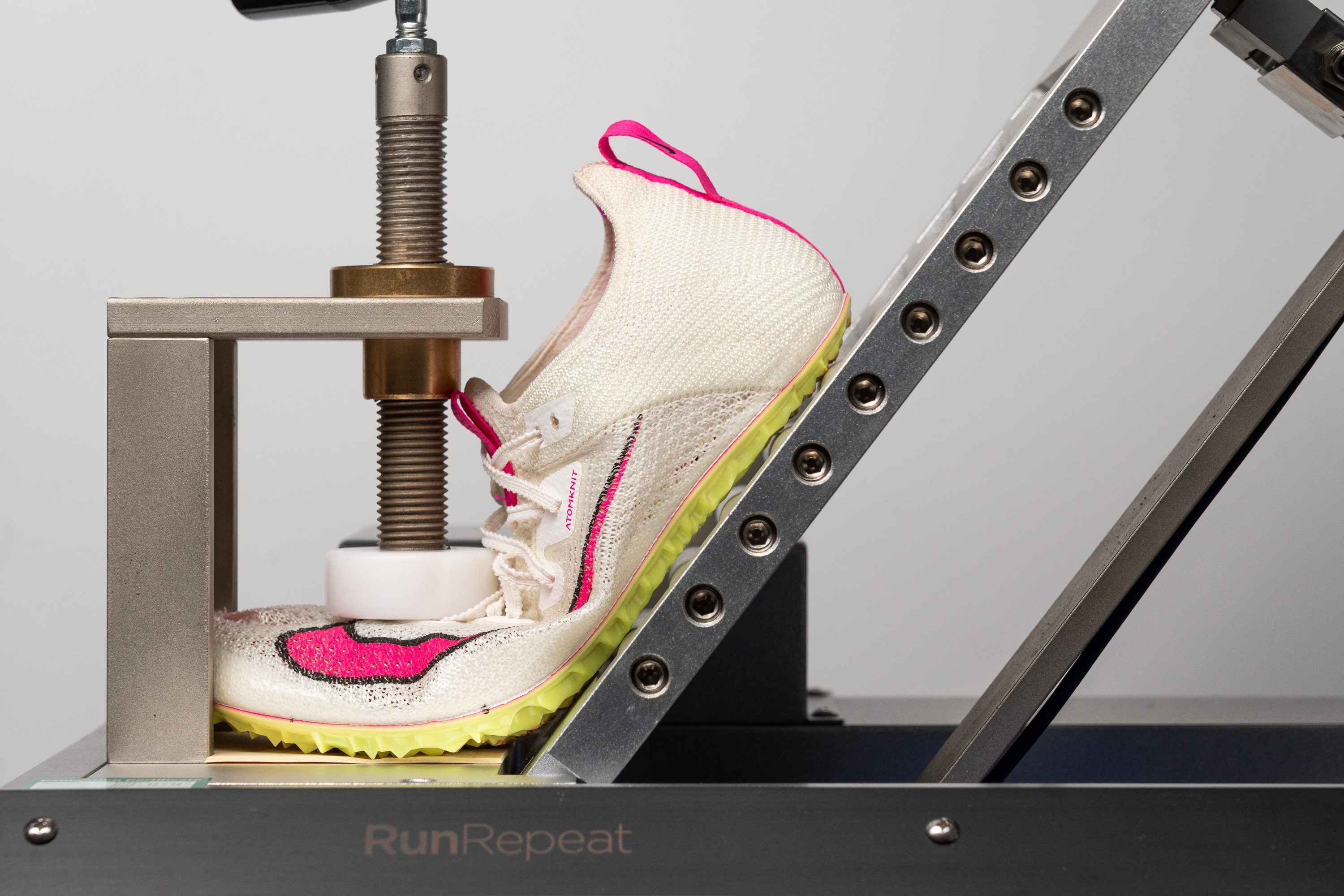
We don’t stop here, so we also test torsional rigidity. We twist the shoes and assign them a 1-5 rating, where 5 is the most rigid.
As we can see, the rule that stiffer shoes are made exclusively for sprints and flexible track shoes exclusively for longer distances no longer applies.
Cushioned track running shoes and racing flats
When it comes to cushioning, we look at 2 values: stack height and softness. To measure the heel and forefoot stack height, we use a digital calliper and stick to the guidelines written by WorldAthletics. This means that the shoes have to be cut in half and the measurements taken at the centre of the shoes, at 12% and 75% of the inner shoe length.
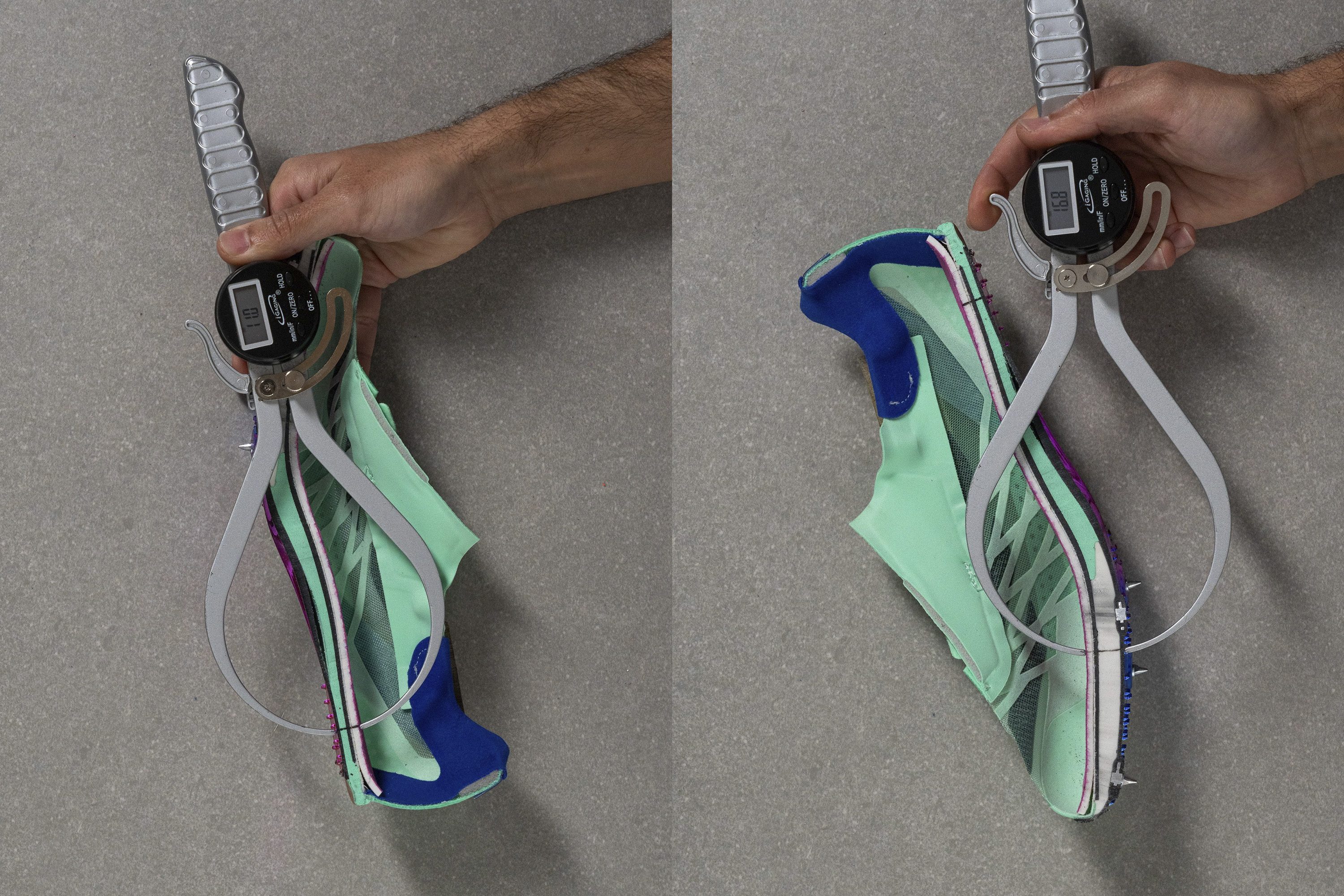
The amount of cushioning varies. Roughly, it goes from 10 to 20 mm, both at the forefoot and at the heel. Keep in mind that 20 mm is the current legal limit.
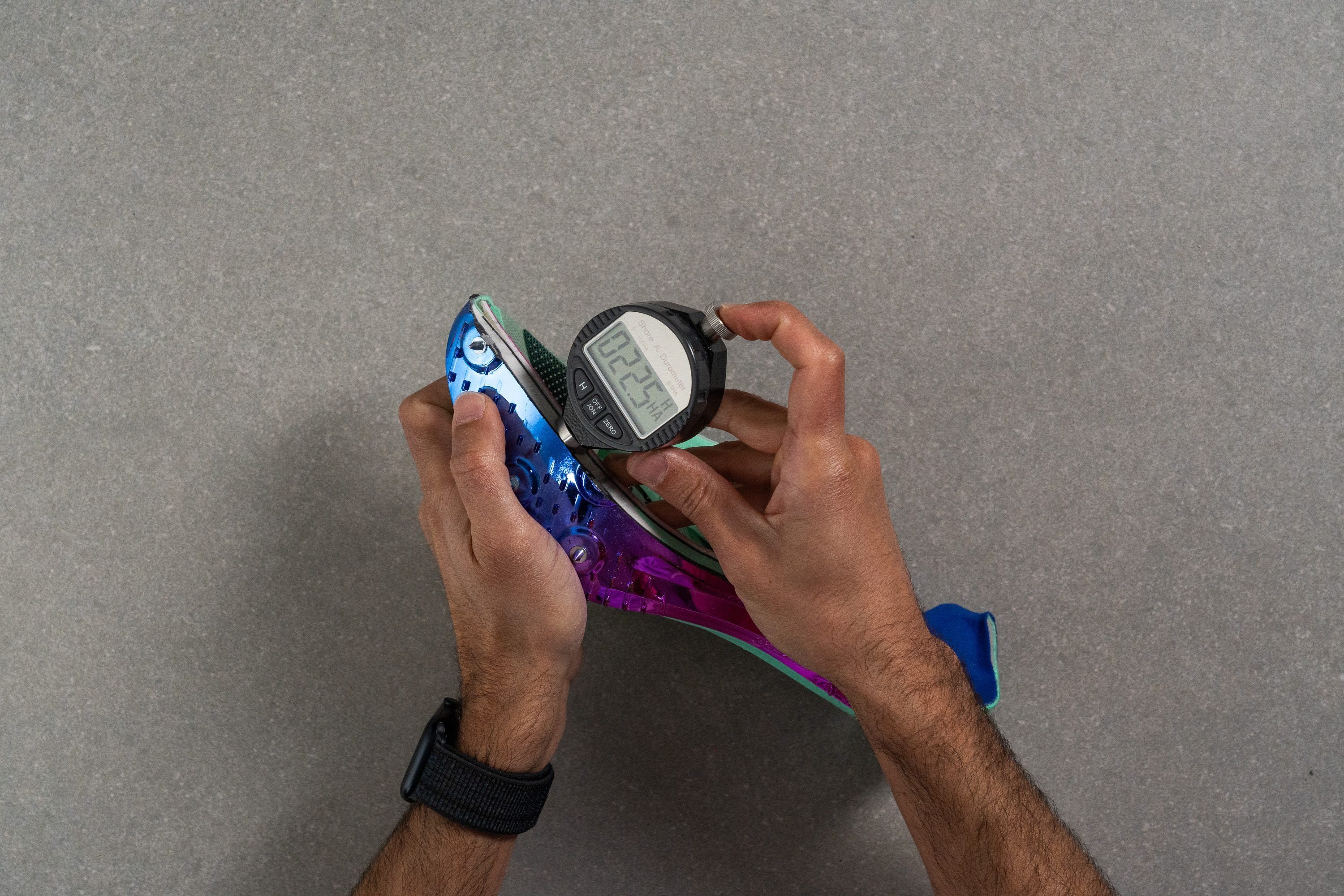
Here’s the softness of the lowest-to-the-ground running spikes:
And here’s how soft the most cushioned track running shoes are:
How breathable are running spikes?
More breathable than running shoes, on average! To assign them the exact number, we fill running spikes with smoke and then watch how much of it comes out and at which pace.
To better understand what’s happening here, we examine the uppers under the microscope. Spikes that breathe the best have large ventilation holes visible under the microscope, while those that get lower breathability scores tend to have more overlapping layers and/or smaller vent holes.
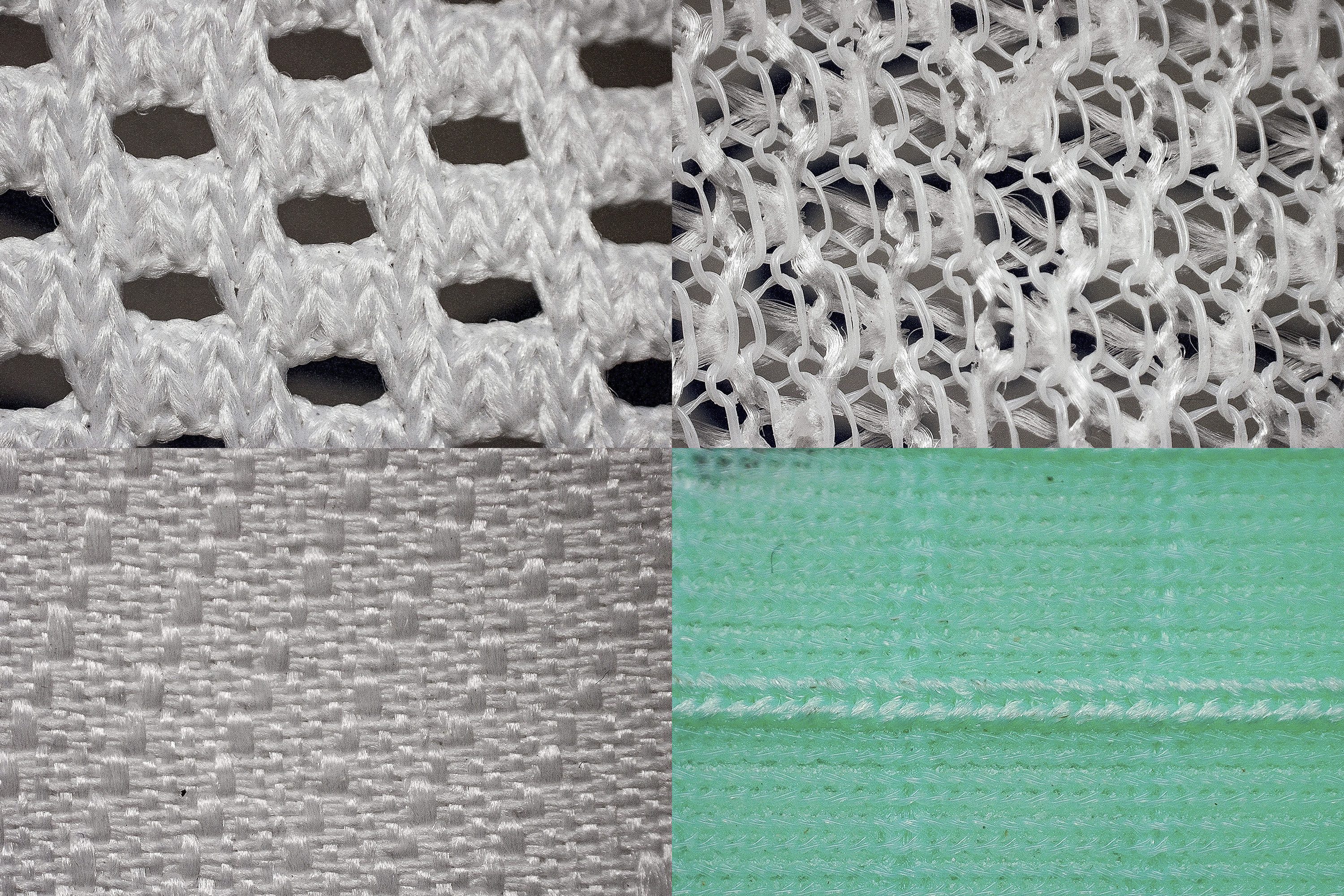
Wide toebox in track running shoes
Track shoes have an aggressive design. However, this does not mean your feet will be cramped at all times! To understand fully the track spike’s toebox volume, we fill it with a special gel and freeze it.
This allows us to get the exact measurements of the shoe and the toebox.
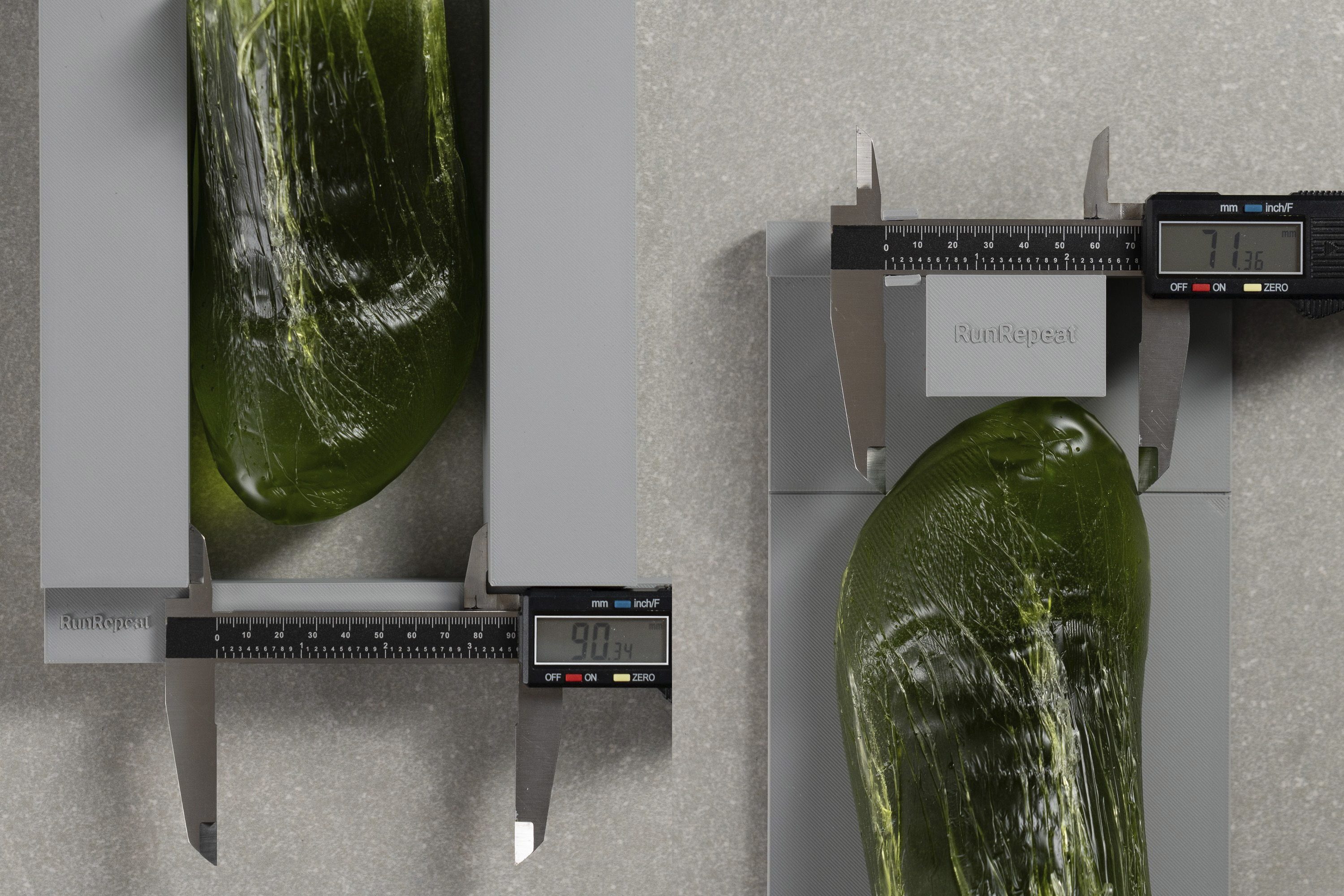
These 2 measurements are important because some track athletes need more room at the ball of the foot and some at the big toe. Our feet and toes don’t have the same shape, so having 2 measurements helps immensely!
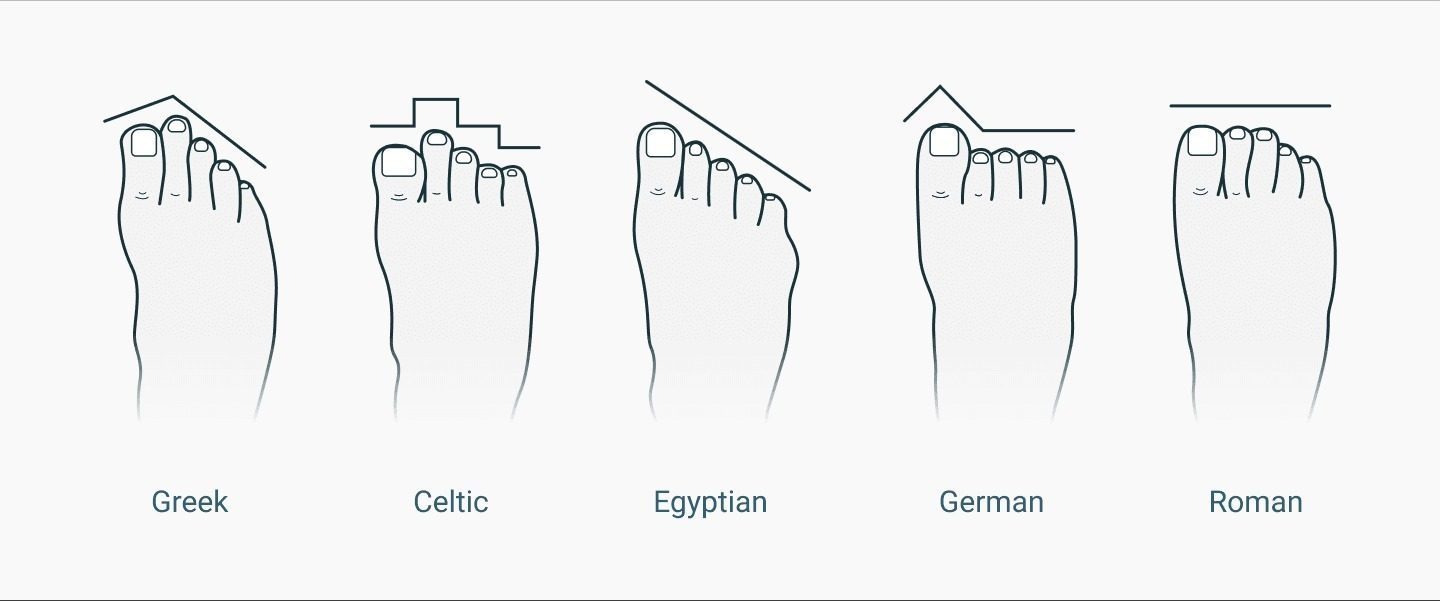
Unlike competition running shoes, running spikes are not that pointy! Their toeboxes are not tapered and look like foot-shaped running shoes.

Weight of track running shoes
The lighter, the faster! We wrote about this in greater detail in our guide on running shoe weight. Here, we’ll focus on the numbers.

As mentioned above, previously sprint running spikes had no cushioning and weighed the least. Now, it’s all about cushioning and there’s no clear rule on the weight, sometimes running spikes weigh more than long-distance spikes.
Toebox durability in running spikes
The thing with the upper is that some price has to be paid. Of course we want them as light as possible, as breathable as possible, but then, how durable are such uppers? Or, if they are more durable, how sweaty will our feet be?
In our lab, we use a dremel and apply always the same pressure, RPMs and time duration to test the durability of the toebox
Based on how much damage there is, we assign a 1-5 toebox durability rating to each track spike, where 5/5 is the most durable and 1/5 the least durable.
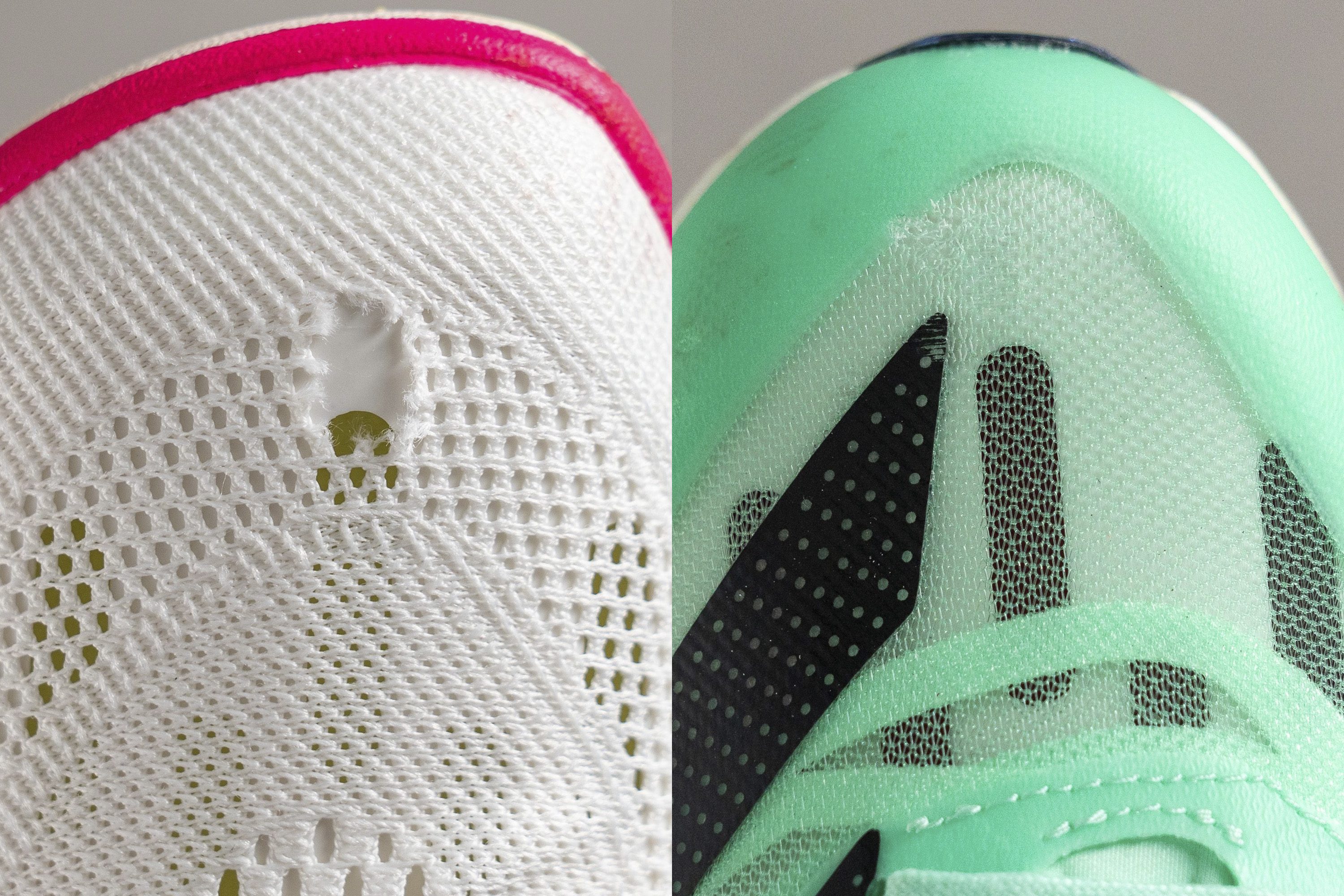
Carbon-fibre plate in track running shoes
Some track shoes feature a carbon-fibre plate embedded into the midsole. We wrote a lot about carbon plates in running shoes and here, in track shoes, their purpose is the same: they create snappier toe-offs, and more explosive performance.
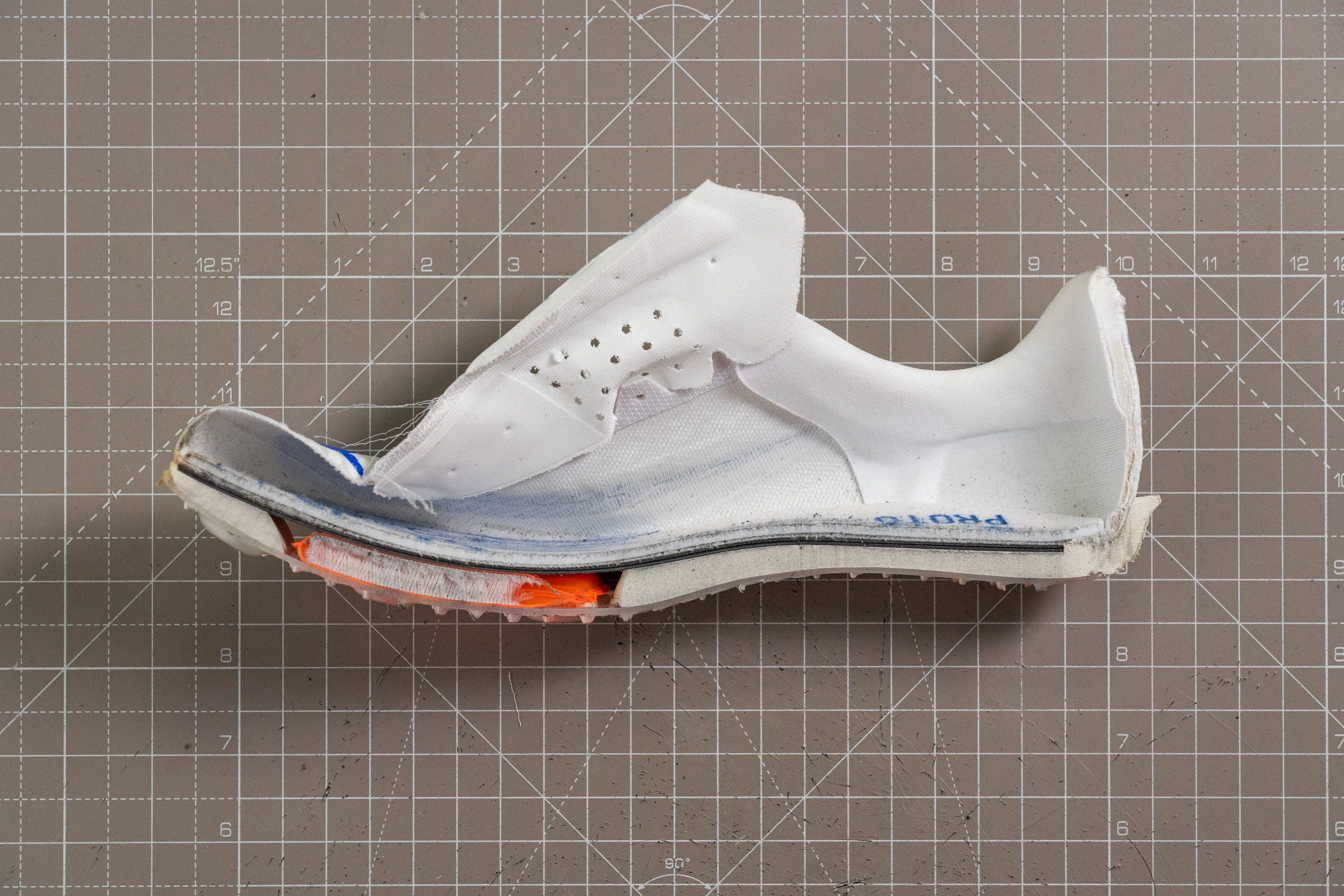
While it’s great to experience a superb energy return, this comes at a price, literally. Carbon-plated track shoes are more expensive and also less durable. Usually, athletes save them for the race day only.
Carbon-fibre plates are rigid and they should be in order to enable such propulsion. Looking at the stiffest track shoes, most of them have a plate! Also, looking at the most expensive track shoes, most of them are plated.
Socks or no socks?
This all comes down to the personal preferences. If you do wear socks, general advice is to wear thinner socks, so that you don’t stretch out the spike. If you don’t wear the socks and are afraid of the blisters, there are different lubes on the market that can be of great help (like Squirrel’s Nut Butter or any similar salve).
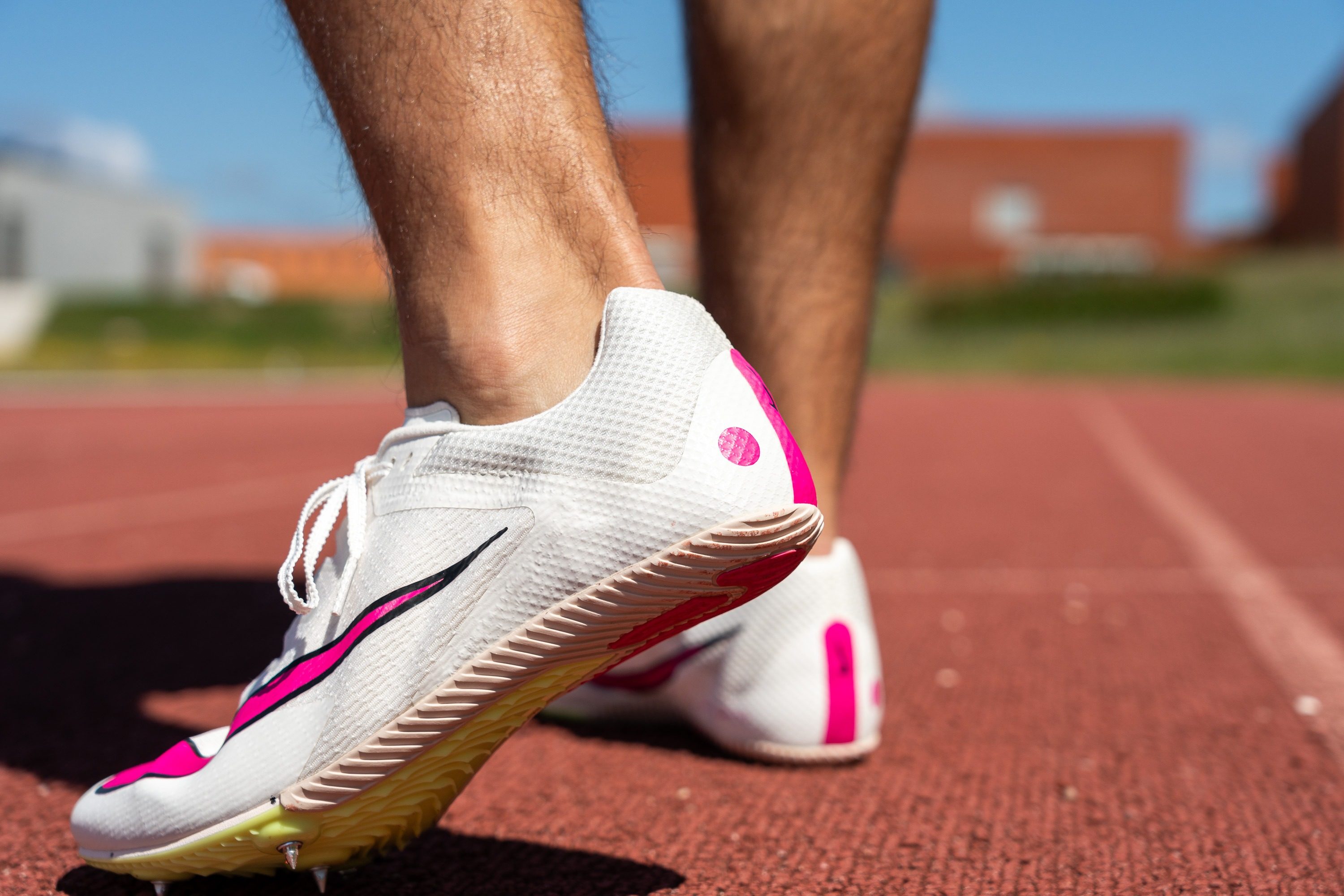
Why many prefer wearing socks:
- This way, spikes smell less
- They get less or no blisters with socks
- It simply feels better or allows for a better lockdown.
Athletes who wear running spikes with no socks do so because:
- They prefer direct contact with the spike
- They love the ground feel, which can be lost (somewhat) when wearing socks
- Their feet sweat less this way
- They can’t find socks that fit perfectly both onto their feet and into the spikes
- They use chalk, powder, or vaseline to prevent blisters.
What might worry you here is the heel padding durability. While not directly related to the sock use, it is related to how you put the spike on and whether it’s all smooth in the heel area. If it gets itchy, you may want to use socks or tape to avoid heel blisters/bleeding.
We use a dremel and always apply the same force, RPMs and time duration. Then, looking at the damage, we assess it on a 1-5 scale, where 5/5 is the most durable heel padding.
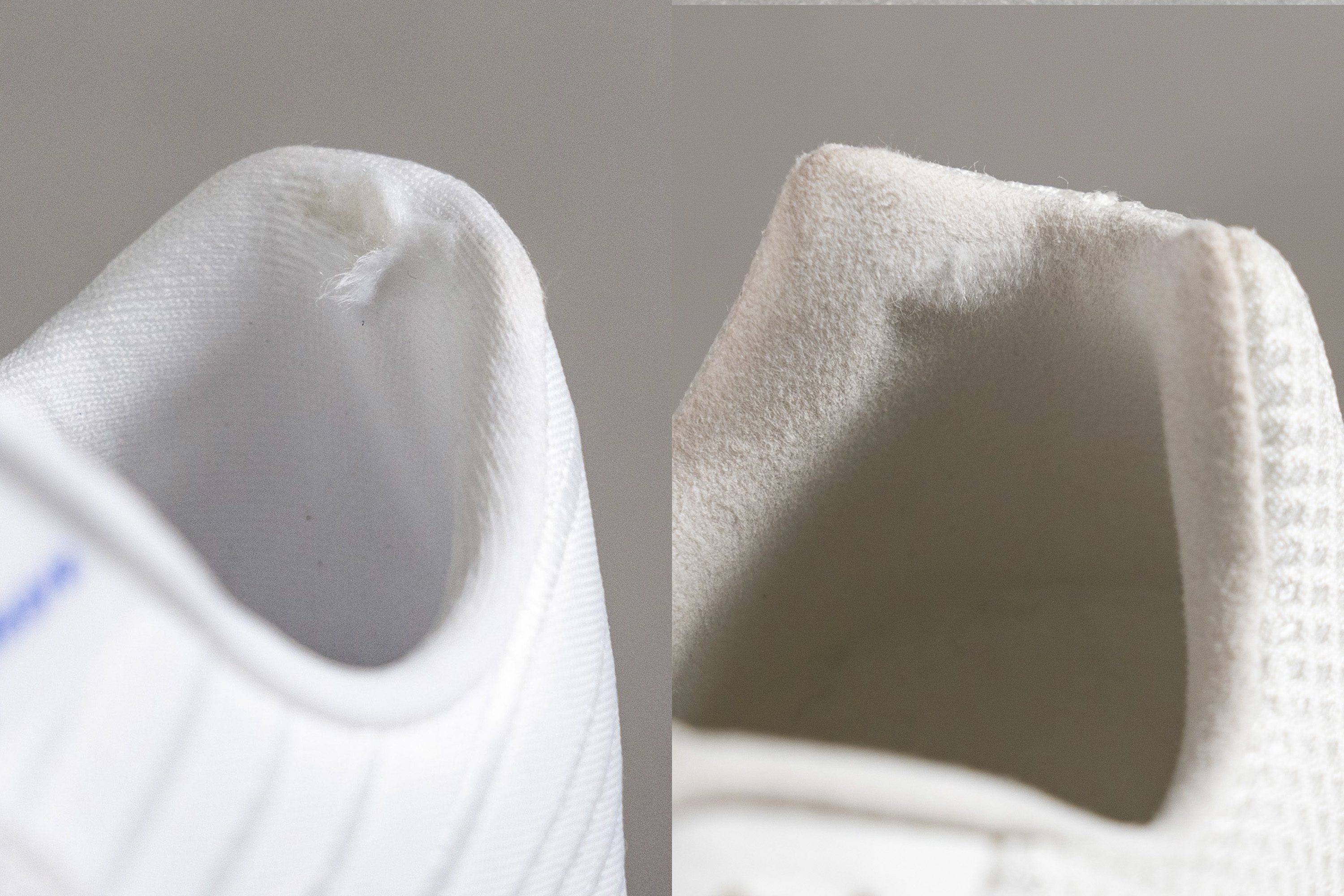
Cheap running spikes
Premium cushioning, the best plate, durable pins… It all comes down to the price. At the bottom of this chapter, we list the cheapest running spikes, only there, we list their MSRP or manufacturer’s suggested retail price.
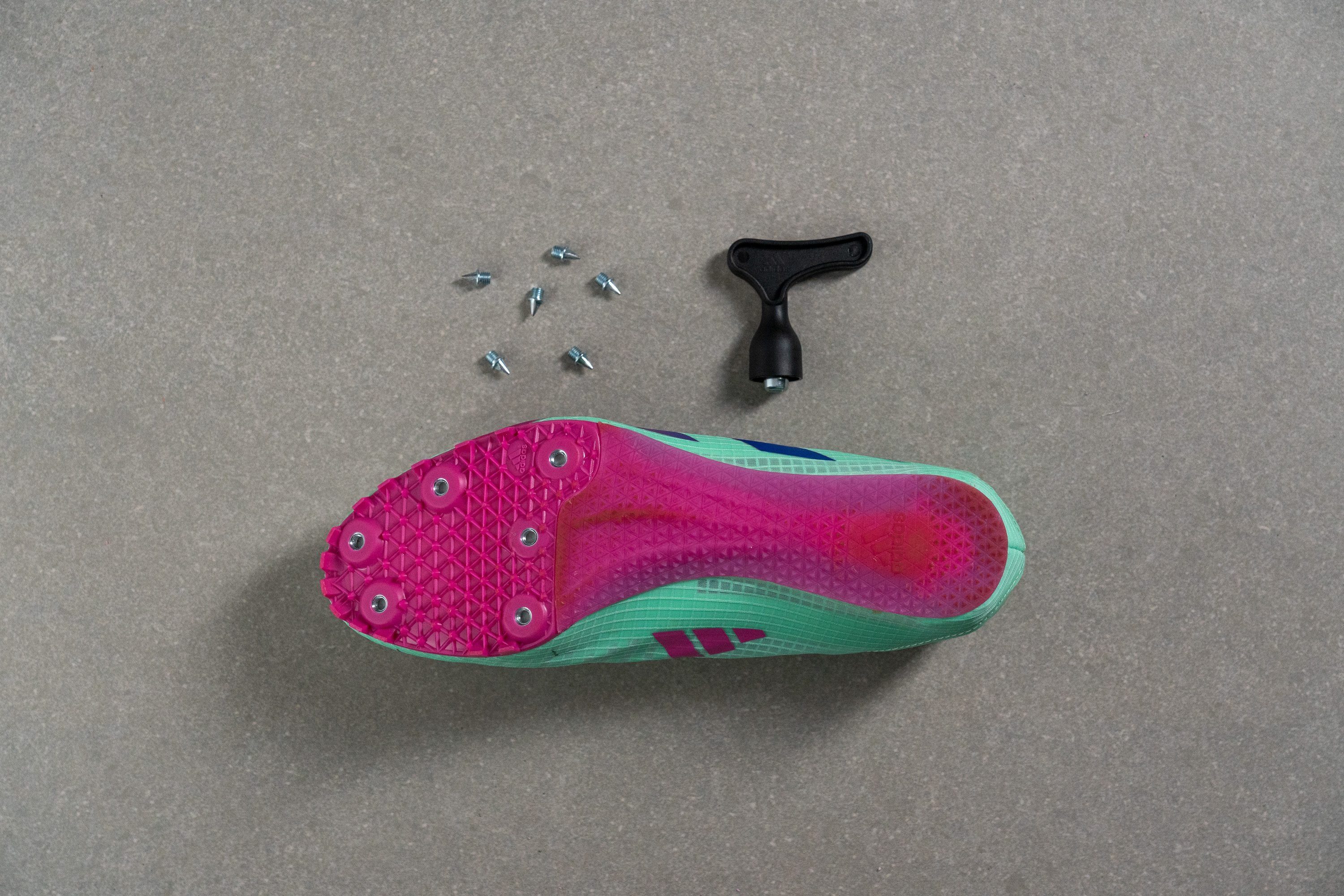
We always recommend looking for a good deal, though! We list deals on running spikes here, but you can also set a price alert and get an email when the track spike in your size gets discounted!
Spikes for field events: throwing, jumps, and pole vault
The focus of this guide was on the track running shoes or running spikes, but we should not forget about other disciplines, throwing and jumping.
| Jumping spikes | ||
| Long-jump / Triple-jump | High-jump | Pole vault |
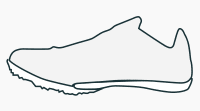 |
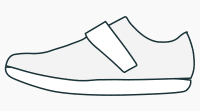 |
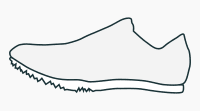 |
|
|
|
| Throwing | |||
| Javelin / Shot put / Discus throw / Hammer throw | |||
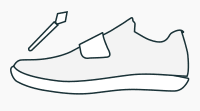 |
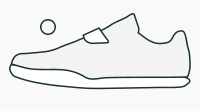 |
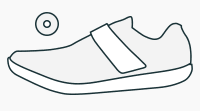 |
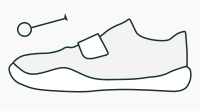 |
|
|||

